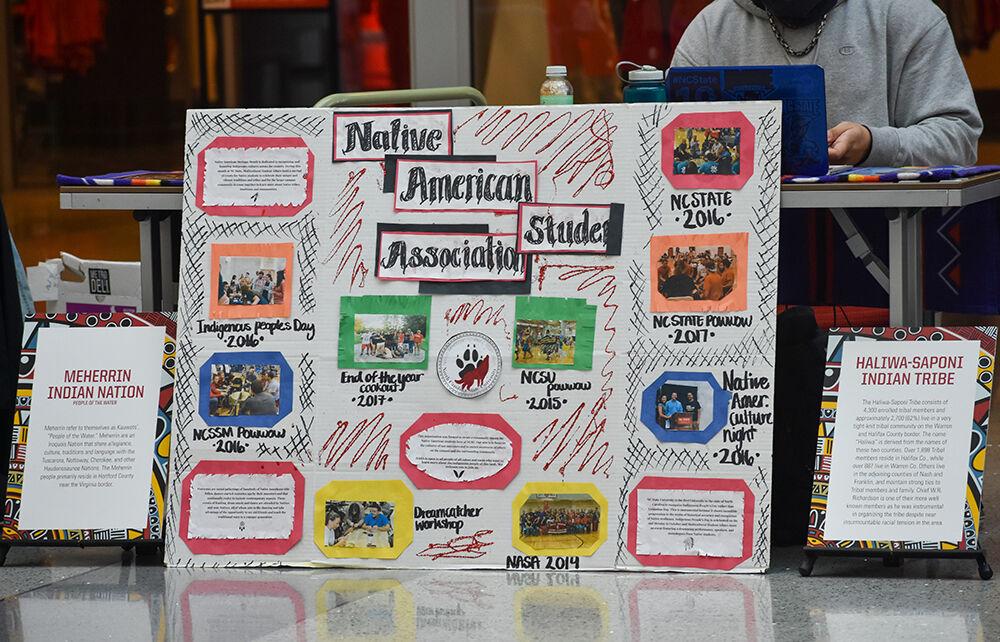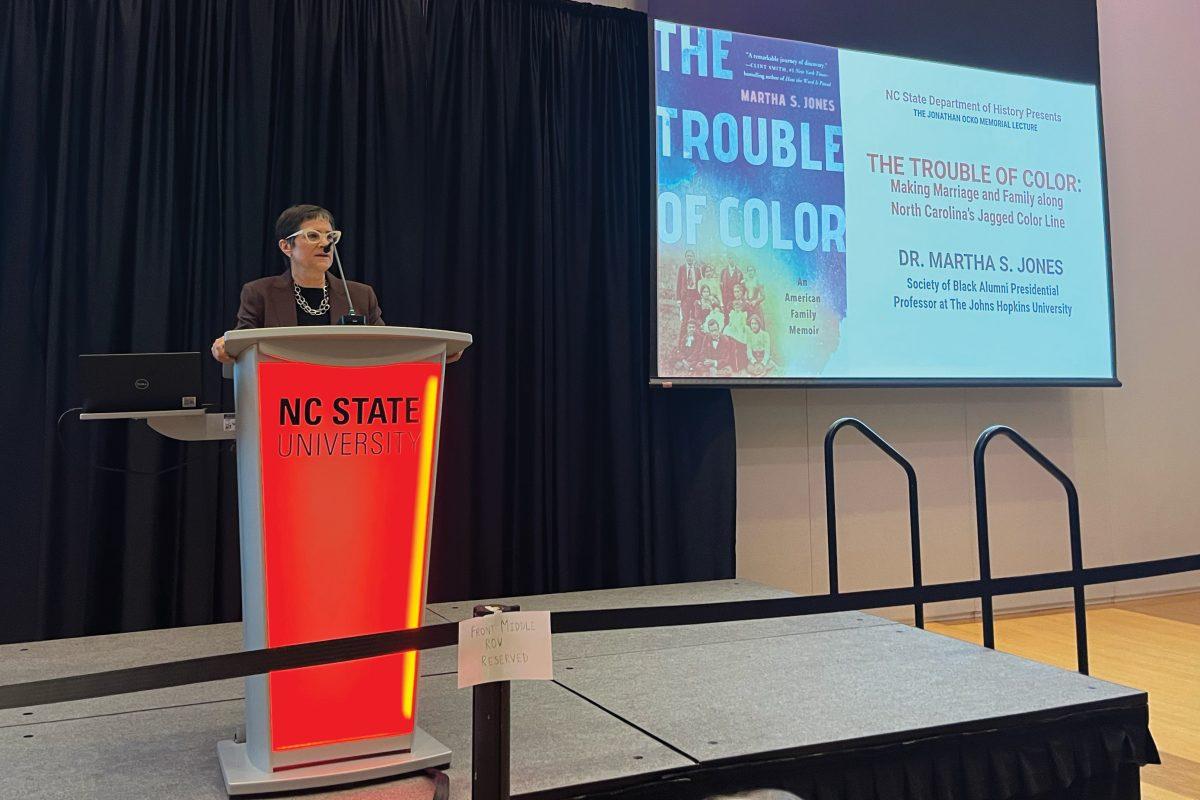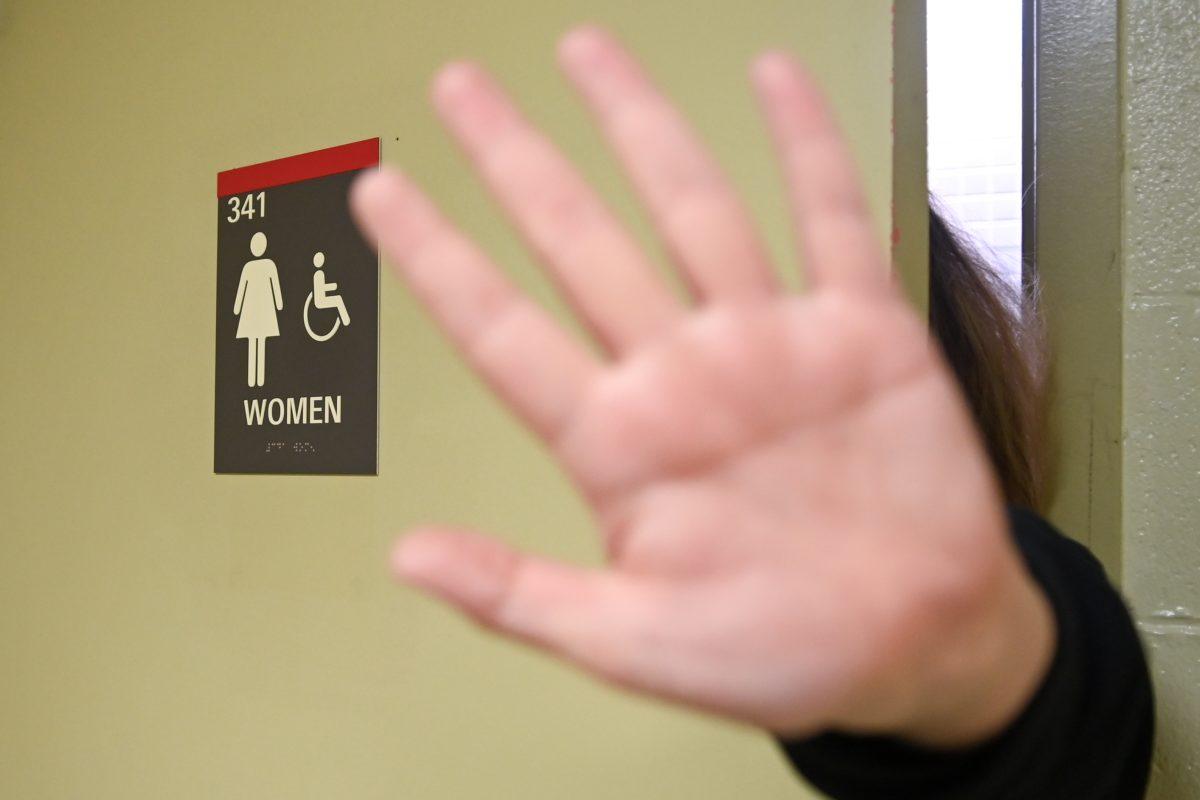On Nov. 1, Native American Heritage Month began, and various Native American groups, such as the Native American Student Association (NASA) and the Native American fraternity, Phi Sigma Nu, were at Talley Student Union on Monday to celebrate the month and spread awareness about Native American students and their issues.
Jamison Lowry, a graduate student studying higher education who is also a member of the Lumbee tribe in North Carolina, said representation is very important.
“It’s really important to have events like this because representation, especially when it concerns Native People, is not really there, so we just want to try to make sure that our voices, our concerns, are taken into account,” Lowry said.
This concern with representation was also echoed by Nathan Campbell, a second-year studying computer science and vice president of Phi Sigma Nu. Campbell, also a member of the Lumbee tribe, said he believes it is important to build community among Native American students on campus.
“I feel it important to do things like this to build community on campus because as a Native American student, you are a minority within a minority within a minority,” Campbell said. “My demographic has the highest dropout rate: Native American males at college. So I feel it’s very important to build a community and have a home here at State.”
The kickoff included several tables by different Native American organizations such as the before mentioned NASA and Phi Sigma Nu, and Native Space, a campus housing program for Native American students and those interested in Native American culture. Students were able to go to these tables and talk with organizations which gave out pens and stickers.
According to Gavin Bell, assistant director of Multicultural Student Affairs (MSA), there will be other events throughout the month to celebrate Native American culture. There will be a Native American trivia night on Nov. 3 at 6 p.m. and a Chat N’ Chew on Nov. 11 at 6:30 p.m. in the MSA office.
“[The Chat N’ Chew will] be a time for Native students and allies in the Native community to come together and talk about issues specifically facing the Native community here on campus, and the state and the country,” Bell said. “That’s just the time for students to talk about their experiences on NC State’s campus as being a Native student and allow other people to gain a better understanding as well to where they can become better allies and advocates for that community.”
There will also be a Native American Heritage Month Cultural Show on Nov. 18 at 6:30 p.m. in Talley’s Coastal Ballroom.
“We’re going to do a really big cultural showcase, almost like a cultural talent show,” Bell said. “We’re going to bring in some drum groups that we typically have at a powwow, we’re going to bring in some powwow dancers, we’re going to have some storytelling because that’s a big part of Native culture as well. … We’re going to have a lot of the student orgs tabling at that event as well and a couple of vendors from some of the tribal communities that a lot of us are from.”
Bell encourages students who are not a part of the Native American community to come and attend these events.
“We’ve set up all these events to make it to where people that have no knowledge of Native culture can come in, and they can learn and not feel alienated at the same time,” Bell said.
Bell said he thinks it is important for the University to put on events and celebrate Native American Heritage Month because it allows the diversity of the culture to be shown.
“I think a lot of times with a lot of underrepresented groups, especially in a large PWI, primarily white institution, they can get overlooked, or they can become a monolith,” Bell said. “So everybody thinks that they’re all the exact same when in reality, there’s so many different cultures that are in the midst of all of that, whether that be different tribes, different dialects, different stories, different traditions.”
Lowry said it is important to recognize that Native American culture is still present and an important part of society.
“There is no standard figure of what a Native person should look like,” Lowry said. “We were not a people of the past. We’re here, we’re representing, we enjoy a lot of the same activities as the rest of the population, so just want to make sure we’re seen.”












